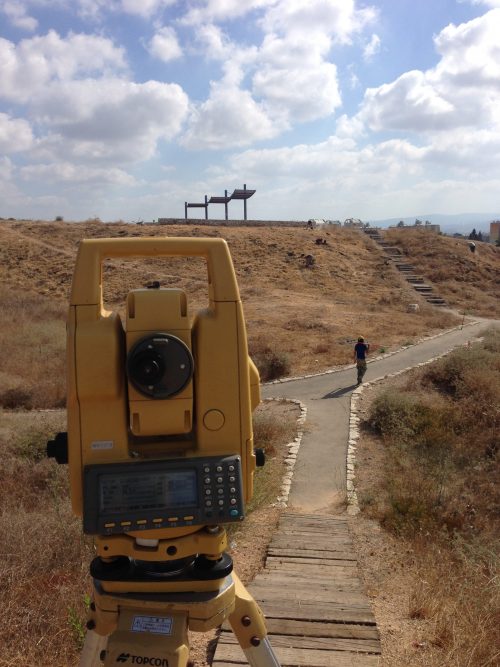By Derek Flick
The term “Total Archaeology” is embedded in the name of the current archaeological project at Tel Akko and sums up the vision of the dig’s directors to utilize a “holistic approach to the past… which integrates archaeological survey, systematic excavation, a robust conservation plan, a public outreach program, and the incorporation of the largely unpublished results from earlier expeditions to address a practical research agenda, all of which have necessitated the development of a cutting edge multi-dimensional recording system”.
The term “Total Archaeology” is embedded in the name of the current archaeological project at Tel Akko, and sums up the vision of the dig’s director’s aim to utilize a “holistic approach to the past… which integrates archaeological survey, systematic excavation, a robust conservation plan, a public outreach program, and the incorporation of the largely unpublished results from earlier expeditions to address a practical research agenda; all of which have necessitated the development of a cutting edge multi-dimensional recording system”.
Sounds great, but what exactly does this multi-dimensional recording system look like on the ground, and how does the student field school experience at Tel Akko differ from other digs?
This is my second season on an archaeological dig. I spent July of 2016 on an excavation of a Roman villa and surrounding structures in the Italian countryside. It was a great experience and I learned a lot about archaeology (not to mention that you can’t beat four course Italian dinners every night). However, instruction was mostly limited to what you might conventionally imagine an archaeological field school would include: techniques for excavating systematically; identifying artefacts, architectural features, and stratigraphy; drawing maps of the site with elevation readings; and learning the history of the site and the region.
So what more can there be to a field school than that?
For one, the Total Archaeology at Tel Akko project has an archaeological survey component. The Tel is rather large, and the area selected for excavation is a tiny fraction of its total area. The intensive process of excavation yields a wealth of information, but it is limited to a relatively small area. Archaeological survey allows for a broader view around the area we are excavating, and each day a few students are able to volunteer to assist with the survey process. Survey duty involves the grueling work of swinging pickaxes for hours in the sun, but it has become a bit of a cult favorite among some students at Akko, myself included. The method employed at Akko is to dig 40 cm x 40 cm test pits laid out 5 meters from each other in a grid. Keeping this process orderly on the sloping land of the Tel depends upon use of a device called a total station which emits infrared energy to be reflected back to the total station by a reflecting prism held at a desired point in the field. The total station is able to measure the angle and distance to the prism reflecting its signal back to it, and then calculating the Northing (latitude), Easting (longitude), and elevation with its on board computer. Learning how the total station works and operating it in the field gave me the satisfaction of working with a fascinating piece of archaeological equipment which I hadn’t encountered before.
But, that’s not all I love about survey. The mix of personalities composed of the staff members, the field school students, and the teenage Bedouin workers invariably leads to a good time. Whether its “DJ Achmed” jamming out to his playlist while digging, the supervisor cracking a joke, or simply watching the sun rise as you dig in the early morning light, there’s always something to make a day spent on survey worthwhile.

